Blood Donor Associations and Brotherhoods
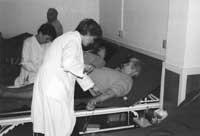
We were able to confirm what was said in the introduction by talking to Sabin Urcelay, vice president of the Gipuzkoa Blood Donor Association. And since this topic has caused us curiosity, it has occurred to us to reflect it in the magazine.
Blood donors…
First of all we must clarify the same title: Associations and Brotherhoods of Blood Donors. In this respect, the brotherhoods are associations affected by INSALUD and the rest are associations. In addition, all the brotherhoods emerged to respond to the blood needs of a large hospital, and among the institutions can be found two types: those created to respond to the needs of a large hospital and those created to respond to a territory. Those in Araba and Bizkaia have been created around the main hospitals in the area, while those in Gipuzkoa and Navarra have been created to respond to the territory. If we look at the names, we will immediately notice the type: “Brotherhood” of Blood Donors of “Txagorritxu” and “Gipuzkoa Blood Donor Association”.
Most of them left in the 1960s, with Navarre being the pioneer country. In short he will take a tour of 50 years. Only 50 years? Someone may ask. Yes, even if it is the longest time, 50 years. How was the blood needed for the first transfusions then obtained? How did they unfold? Although we once had answers to these questions, Dr. Sabin Urcelay reminded us: “Before forming the Associations and Brotherhoods blood was bought. Those who donated blood were paid and those who had money to buy were paid…”
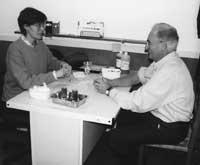
With the aim of responding to this injustice and dismantling the business of red gold essential to live. “In the case of Gipuzkoa,” says Mr. Urcelay, “the women of Catholic Action began to donate free blood in 1964. After this initiative the Association emerged in May 1965. Of course, he has had his adventures, but today we can say that we are firm.”
Each territory of Euskal Herria has gone to make its own blood bank and fortunately the collaboration between both is very good. Since its foundation in Navarra and Gipuzkoa they have had their own blood bank and from there they have satisfied the hospitals and clinics of these territories. The three existing in Bizkaia have joined together and have already constituted the Blood Bank of Bizkaia. In Alava they are in the phase of association and constitution. “Having one in each territory facilitates work and, in addition, by coordinating better, we do not make anyone who wants to donate blood run out. Our mission is not to compete with each other, but to respond to the needs of blood. That’s very clear to us.”
Thanks to the collaboration
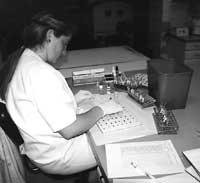
For regular donors, what is explained below will be well known, but if you have never done so, know how you can take that first step: every three months, professionals working in this regard will approach your town or neighborhood, usually a doctor and four nurses, and it is possible that one of your acquaintances is in organizational work. These are the volunteers of the Edol Donor Association. Thanks to them, and of course to donors, the Association remains healthy.
When asked about the steps before the donation, Dr. Urcelay explained: “Before donating the blood we must have two clear things: the first, which tends to take care of the health of the giver and the second, the one who takes it. First of all, your doctor will ask you a series of questions to complete your medical history. After the first step, tension is taken and then tested for anemia. If all is well you can donate blood and go to the room enabled for it. After application, you can take a snack (which is usually convenient) to regain strength and return almost immediately to your usual tasks.”
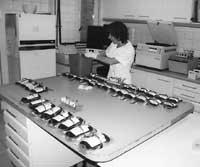
“All of this, of course,” says Mr. Sabin Urcelay, “can be organized thanks to the 400 volunteers we have in the association. They are in charge of the infrastructure and call donors, as well as obtaining and preparing the hip foods and drinks offered on it. In Gipuzkoa we have 65 coordinated groups or delegations capable of self-financing. I take this opportunity to thank all the people who have collaborated (butchers, bakers, shops, etc.) for this to happen.
”The red gold route
If you feel like looking at the bag while donating blood, you will notice that instead of having a single bag, there are three bags tied. Why? We transfer the same concern to our interlocutor. The answer is: “In each result 450 cm3 of blood are collected and two other sample vessels are filled for further analysis. If the tests are fine, the blood collected in three fractions will be distributed. The centrifugation of the first bag will separate the red blood cells, leaving the red blood cells in the first bag and the rest in the second. Then the second bag will be centrifuged and this time the plasma and platelets will be separated.”
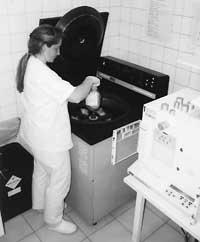
When asked about the duration of the elements of each result, he replied: “Red blood cells have a duration of 35 days, 5-day platelets and plasma, before possible freezing, of one year. We take thorough control of all this and try not to get close to the limits. In the case of plasma, for example, although it has a duration of one year, at 6 months we sent it to the industry to remove the necessary derivatives from it.”
Blood Needs
Blood needs vary from territory to territory and from year to year. However, according to Mr. Sabin Urcelay, “In Gipuzkoa some 32,000 results are needed throughout the year, which are normally covered with the 20,000 existing blood donors. It should also be said that if we are well each year, 3,000 new donors are needed to maintain the level. In fact, every year approximately 10% is discharged, about 3% for housing change, another 3% for turning 65 and the rest for different reasons. Therefore, although it can be said that we have enough strength to meet the needs of Gipuzkoa, it cannot be distracted. If not, we are already on the way down.”
Looking forward
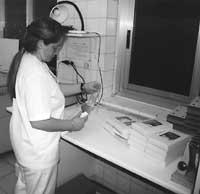
Therefore, we cannot fall asleep if we want to attend to the existing request. Members of the Blood Donor Association are working and have searched for new partners. This year, for example, they have managed to make a gap in teacher training planning. Optional topics include the topic “Blood Results” and Sabin Urcelay tells us that 25 to 30 people have signed up. They want to take advantage of this effort and bring the teachers who will accompany them in their awareness talks.
Progress is not limited to volunteer training. There are other technical advances that are leading to constant innovations. An example of this is apheresis. “Apheresis is a system,” says our interlocutor, “that is used to extract one of the three elements that are obtained through the traditional way. The blood that is extracted is absorbed by a machine that isolates the element that we have given you the order to obtain it once centrifuged and bags it, returning the rest to the veins. This system is used to obtain platelets and plasma, not to obtain red blood cells, as it is the simplest way to obtain red blood cells.”
You have the last word
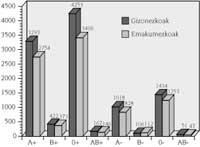
Intentions, desires, desires, objectives... All are necessary and without them nothing can be done. But in all of them donors are the most necessary, since nothing can be done without red gold.
After reading all this, if you still have any doubts, you can continue reading and address the Donor Association or Brotherhood near you and ask us without reservation. They are awaiting response and information. I encourage and remember, giving blood is giving life.
Buletina
Bidali zure helbide elektronikoa eta jaso asteroko buletina zure sarrera-ontzian











